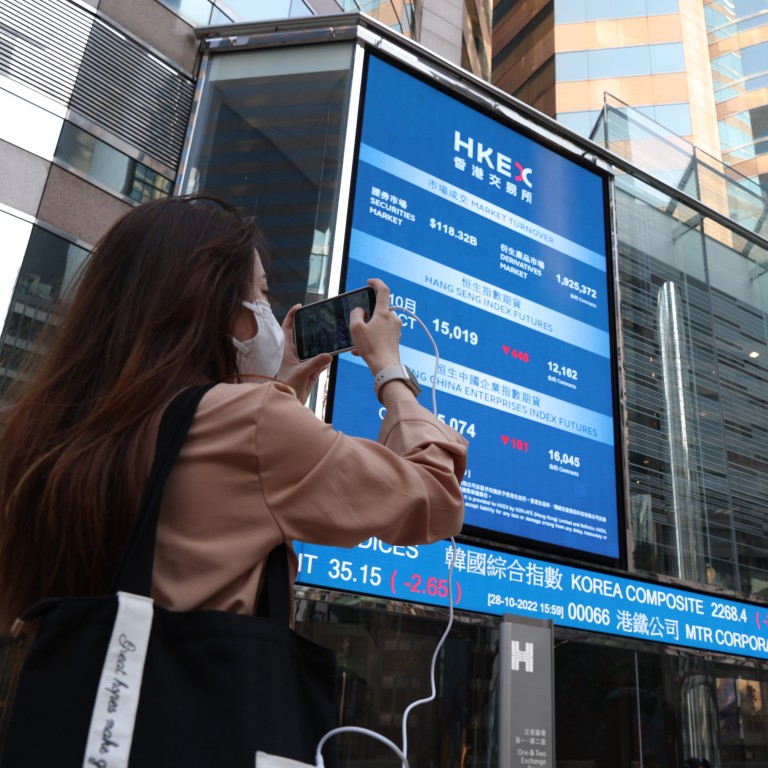
Hong Kong stocks sink after rapid new year rally while China’s onshore market enters bull territory on Goldman upgrade
- The CSI 300 Index climbed more than 2 per cent to drive the market into bull territory before surrendering most of the rally at closing
- Goldman has raised its China targets three times over the past two months, saying the theme should broaden from border reopening to growth recovery
The Hang Seng Index dropped 2.7 per cent to 22,069.73 at the close of Monday trading, the worst since December 7. The Tech Index sank 4.8 per cent, the most since October 28, according to Bloomberg data. The CSI 300 Index of yuan shares closed with a 0.5 per cent gain, after rallying more than 2 per cent.
Developer Country Garden fell 8.3 per cent to HK$2.97 while Alibaba Group Holding declined 7.1 per cent to HK$109 and chip maker SMIC weakened 5 per cent to HK$17.40. Hotpot restaurant chain Haidilao lost 6.9 per cent to HK$21.75.
Hong Kong’s benchmark stock index rose 2.9 per cent last week to near an 11-month high, buoyed by signs of stronger consumer spending in mainland China. The gauge has surged 14 per cent this month, the best start since January 1984. However, its 14-day relative strength index has risen above 70, an overbought marker, since January 4, signalling an imminent reversal.
“The current market rally is not just a consumer and services recovery trade but a more broad-based growth rebound spanning a wide range of industries,” Goldman strategists said. “We expect A shares to assume leadership once the [Hong Kong-listed] H share recovery trade matures.”
The CSI 300 Index, which tracks the biggest stocks on both onshore exchanges, had earlier jumped m0re than 2 per cent to the highest level since July, and brought its cumulative gain to more than 20 per cent from its low on October 31 – a bull market definition.
Electric-car battery maker Contemporary Amperex rose 4.1 per cent to 470.65 yuan while car maker BYD advanced 4.4 per cent to 281.99 yuan while Lens Technology surged 18.8 per cent to 13.39 yuan. Hangzhou Fortune Gas Cryogenic Group surged 45 per cent to 31.17 yuan on its Shanghai debut.
Robust spending and a sharp drop of Covid-related death during the festive season buoyed optimism. Tourism receipts grew 30 per cent to 375.8 billion yuan (US$55.6 billion), or 73 per cent of the revenue in 2019, the government said. Covid-19 deaths fell by nearly 50 per cent to 6,364 from the previous week.
Hedge funds add Chinese stocks as BlackRock cautions market view is too rosy
“With herd immunity occurring faster than expected, undemanding valuations and with policy support likely to provide a backstop for growth, we continue to hold a positive view on the China market,” James Wang, head of China strategy at UBS said in a note on Monday.
Foreign funds snapped up a total of 18.61 billion yuan (US$2.76 billion) worth of onshore stocks during the morning session on Monday, bringing the record-pace of net buying this month to US$19.4 billion, according to Stock Connect data.
Asian markets were mixed, with the Nikkei 225 in Japan gaining 0.2 per cent and Kospi in South Korea retreating 1.4 per cent while stocks in Australia lost 0.2 per cent.


